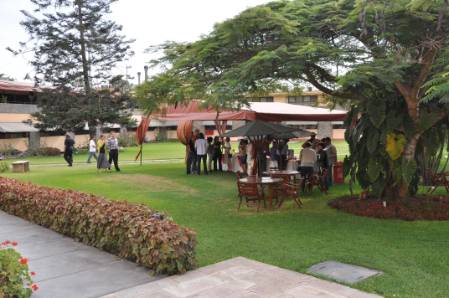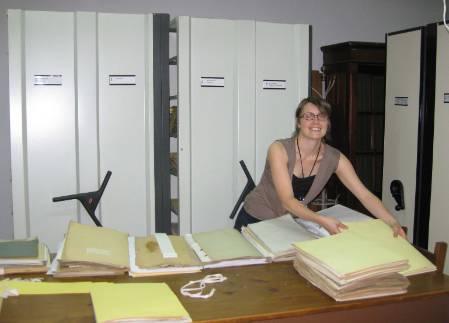Our permit has come through, we are awaiting the confirmation of our rental vehicle.... so while we wait and get organised, we are entering the data from specimens in herbarium collections here in Lima into the Solanaceae Source database. Solanum is such a large genus that botanists fear to tred (we, of course are a bit crazy, so here we go!!) - with 1500 species, it is hard for a non-specialist to get a handle on identification, so many many collections end up in the unidentified cupboards - our first port of call. What a treasure trove! At the Museo we have reduced this backlog by more than half, and in doign so, managed to enter very important collections to the database. Many recent collections have latitude and longitude recorded, so with these data, we can calculate species ranges. This will contribute directly to our new project on the correlates of extinction in the Solanaceae of Peru - THE hotspot of diversity in the family.
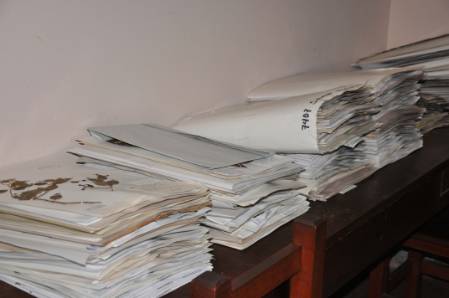
a small part of the now identified Solanum collection at the Museo!
Before we leave Peru, we will copy the records from each herbarium to a new file and leave it with those in charge of herbarium management - taht way, no work is duplicated and our colleagues can use the records to enable their own research as well. As we sit madly entering data, students and visitors from elsewhere in Peru constantly arrive bringing small piles of dried plants in newspapers - their own collections for us to identify. Most of the time we can identify things to species, but when we can't it is frustrating to not be able to help. People are very tolerant of our failings however, and we have many very interesting conversations.
The other evening the Museo held its 94th anniversary celebrations - with the dedication of a fossil of Purussaurus - a huge crocodilian from the pre-Amazon basin discovered by palaeontologists on the staff.

Purussaurus - reconstructed!
Peru does parties exceptionally well, and this one was no exception. There were several speeches, including a lvoely one from the widow of a prominent Peruvian grass taxonomist Oscar Tovar whose library has been donated to the Museo. I named a species in honor of Dr. Tovar (Solanum tovarii - from his native department of Huancavelica) in the 1990s - I am hoping we will find it when we go south into the mountains.
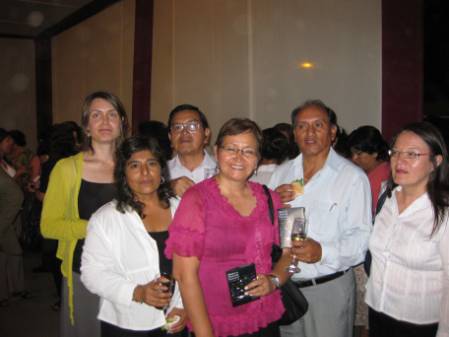
Today we visited the herbaria (there are two, but confusingly they are advertised as only one) of the Agricultural University in the outskirts of Lima in La Molina. Here one can see the dry hills that surround the city - the coast of Peru is part of the Atacama desert and is very dry. The summer (now) is hot and dry, but the winter is damp, cold and wet with fog all day coming in off the Pacific Ocean - this "garua" creates a very special vegetation type called "lomas" in the hills where the moisture collects. Several endemic Solanum species are found in this habitat - like Solanum montanum (see the entry in Solanaceae Source for pictures of this species, http://www.nhm.ac.uk/research-curation/research/projects/solanaceaesource/taxonomy/description-detail.jsp?spnumber=3951) - which makes an underground stem like a potato, but they are not related.
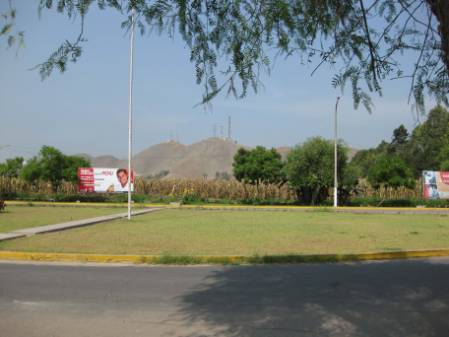
At La Molina (as the university is called) we especially wanted to see the specimens collected by an amazing German botanist who lived and explored in Peru in the early part of the 20th century - Augusto Weberbauer. His book (in Spanish called El Mundo Vegetal de los Andes Peruanos - loosely translated as The Plant World of the Peruvian Andes) is still a classic for the understanding of habitats and vegetation in the country. Many of his specimens were used to describe new species by the great German solanologist Georg Bitter, but were tragically destroyed (along with many others) in the bombing of Berlin in the 1940s. But, fortunately for us, duplicates are held in the La Molina herbarium; to me, this is the single biggest advertisment for spreading the collections around, they are so easy to destroy and lose forever. Expert and careful curation is so important for future generations - thisis why we will be collecting duplicates of everything, half will stay in Peru, half will come to the NHM. These Weberbauer specimens are critical for understanding these names - some of these are the only specimens collected by him in existence. We were kindly received by the curators, and examined the type specimens that had been identified, but as I looked into the rest of Solanum - I saw at least three more Weberbauer types, lurking unknown inthe cupboards - a return visit is indicated!
Just as at the Museo, we identified many of the Solanum specimens without names and entered then into the database (well not all, there just was not enough time). We found some real oddities - like a minature species from the north of Peru, a bit like our friend Solanum chamaesarachidium from Argentina, but quite different; a new one? Only more study and collecting will tell......
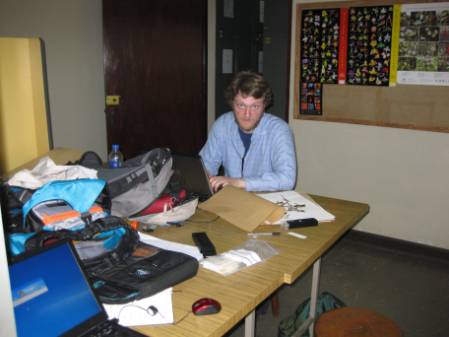
Andrew Matthews - slightly crazed from doing to much specimen databasing; without him we couldn't have done it!! He definitely deserved a cold beer......







